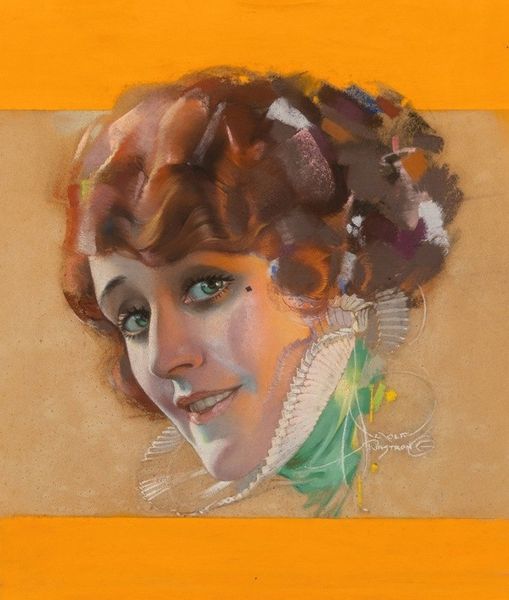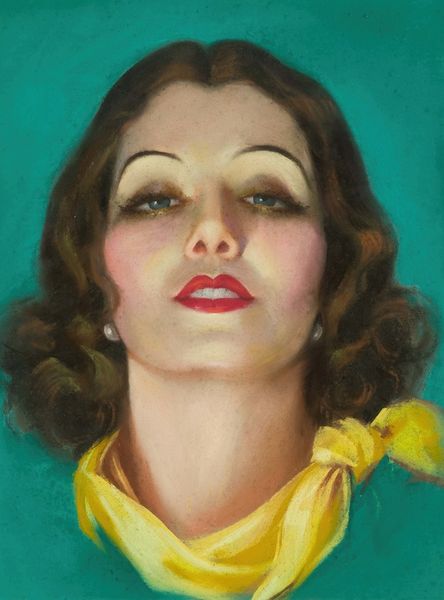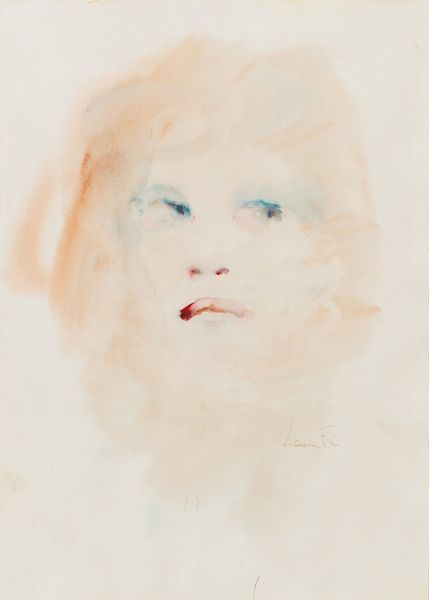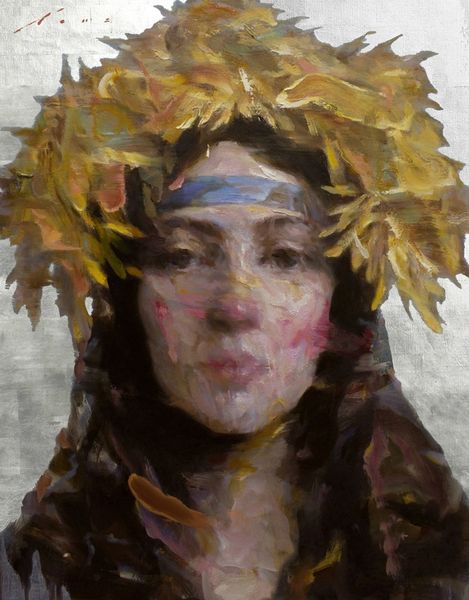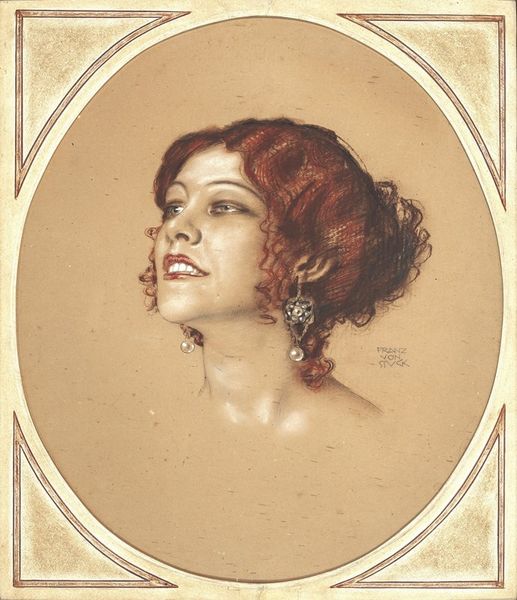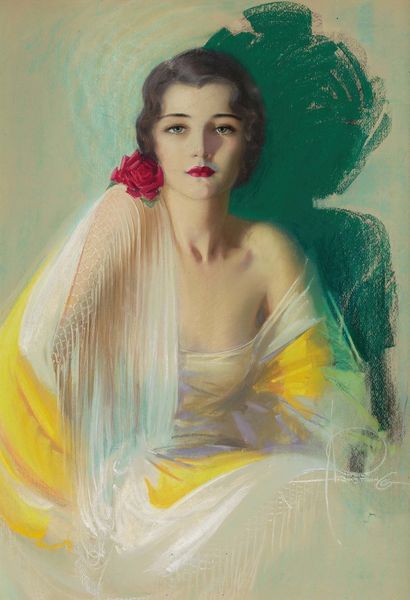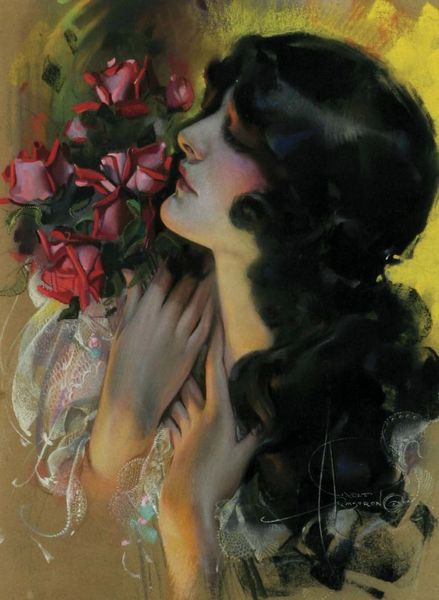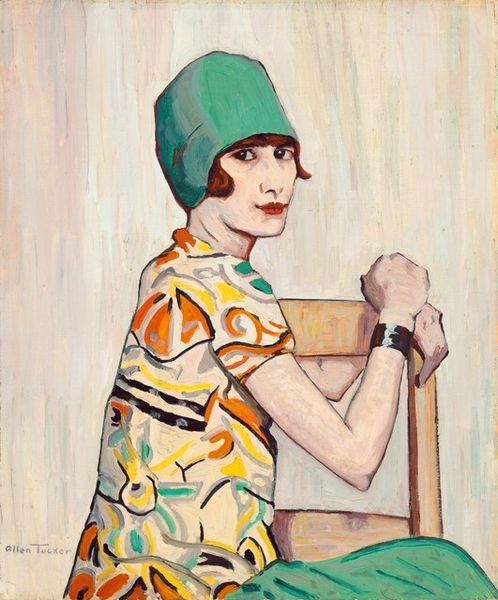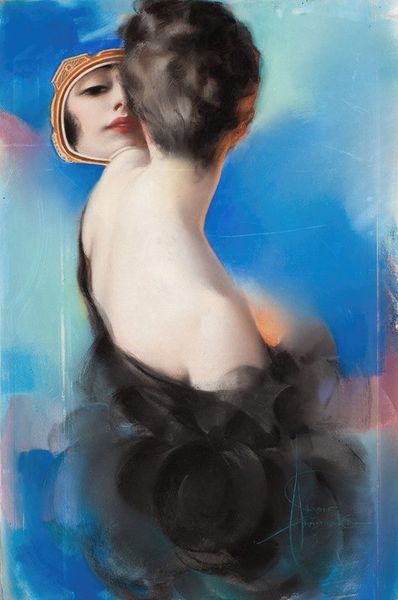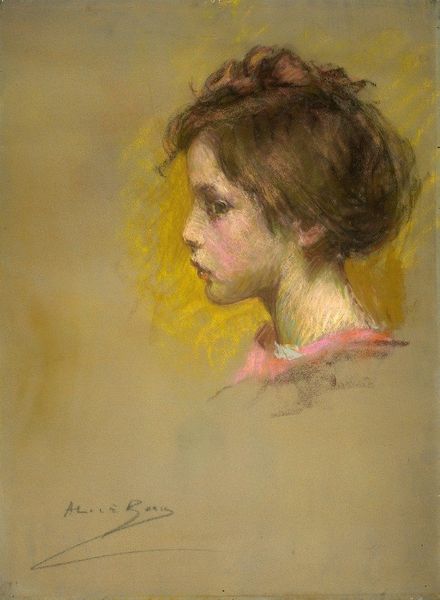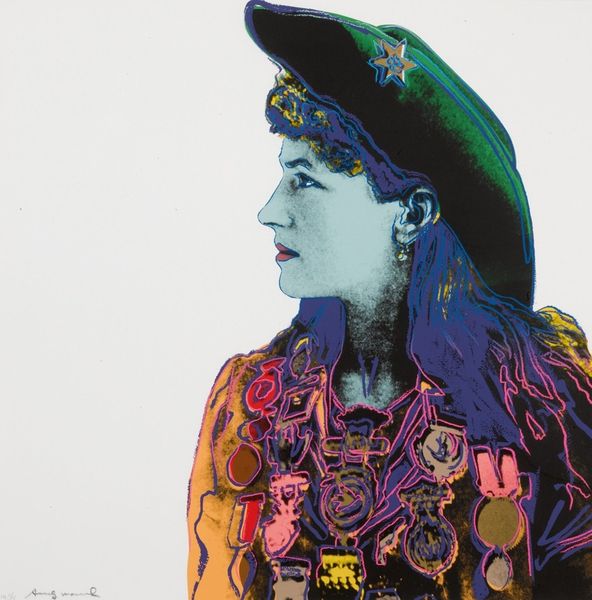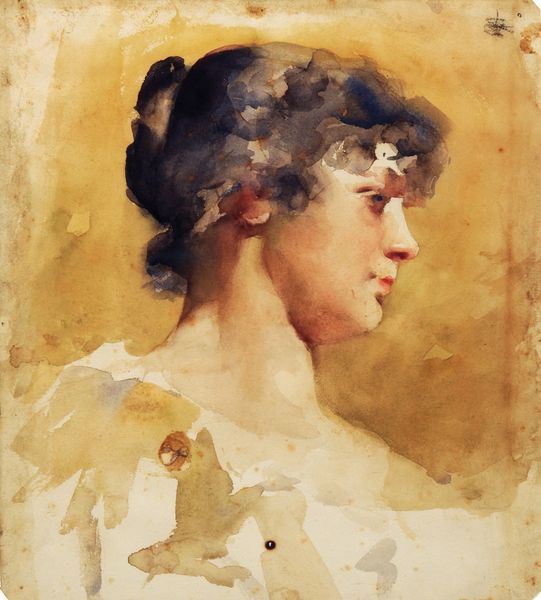
drawing, pastel
#
portrait
#
art-deco
#
drawing
#
figuration
#
intimism
#
portrait drawing
#
pastel
Copyright: Modern Artists: Artvee
Curator: Standing before us is Rolf Armstrong’s 1921 pastel drawing, "Betty Blythe." Editor: There’s something ethereal about her upward gaze. The composition directs your eyes skyward. What's striking is the contrast between the smooth rendering of her face and the almost abstract, broken pastel strokes surrounding her. Curator: Armstrong's portraits of actresses like Blythe gained immense popularity through reproduction in magazines. This piece shows us the glamorous ideal of the era, fueled by the rising film industry and mass media's influence. It exemplifies how images of beauty and success were distributed and consumed. Editor: The chromatic scheme is also noteworthy; note how the muted background pushes the rich hues of the scarf and the vibrant red lips into sharper focus. The scarf itself becomes a swirling vortex of color—greens, yellows, browns, even a hint of blue. Curator: Consider the symbolism too. Actresses like Blythe became symbols of the modern woman. These images became tools for social mobility and aspirations. This work invites a wider exploration of societal values reflected in the artistic portraiture. Editor: Formally, it’s a brilliant study in textures. The velvety smoothness of the skin versus the rough, almost unfinished quality of the scarf and background creates tension and visual interest. Observe the almost mathematical construction: the careful interplay between positive and negative space; this isn’t just a portrait. Curator: Indeed, Armstrong's artistic portraits shaped public perceptions of femininity. These drawings, like the film industry itself, offered powerful narratives of modern life during the Roaring Twenties. They embodied the allure and ideals of a rapidly changing society. Editor: Precisely. The art lies not just in what is depicted but how. Armstrong compels viewers to examine every visual layer, peeling back the curtain to unveil a narrative rich with implications. Curator: Reflecting on “Betty Blythe” gives us more than just visual satisfaction. Editor: Absolutely. The composition, materiality, and rendering capture not just a likeness but a narrative charged with social meaning.
Comments
No comments
Be the first to comment and join the conversation on the ultimate creative platform.
